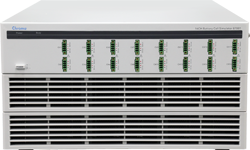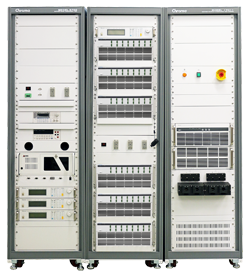A report from International Energy Agency (IEA) in 2019 estimated that the global sales of electric vehicles will reach 22 million at the end of 2030. With the burgeoning EV demand worldwide, the performance of electric vehicles and accidents caused by them have also been scrutinized. As more and more internal combustion incidents were resulted from battery overcharge, a battery management system (BMS) can be utilized to monitor and manage the batteries in real time, maintaining a balance on the cells’ voltage and temperature to ensure safe and effective battery pack operation. Thus, when it comes to safeguarding the batteries used in electric vehicles, BMS is the key factor.
The BMS function encompasses the capacity, life and safety of batteries. From the most basic over and under voltage protections to advanced balancing circuits, all aspects are covered to make sure that the batteries are operated within a safe voltage range avoiding them from damaged due to cell imbalance. In the past, the common way for R&D engineers to perform BMS function verification was to use multiple power supplies in series or to simulate the cell output voltage with a resistor divider. However, with the enrichment of BMS functions and the increase of battery cell strings, the use of multiple power supplies in series requires more hardware space and costs, and the use of resistor voltage divider cannot ensure the voltage accuracy nor effectively isolate the voltage from each battery cell string. The 87001 Battery Cell Simulator developed by Chroma for BMS testing is suitable for R&D verification, manufacturing, and quality inspection, etc. Its characteristics and commonly used scenarios are as follows:
- High-precision voltage source (± 1mV) can reliably verify the accuracy of BMS voltage measurement and the ability of overvoltage protection to avoid thermal runaway caused by battery cell overvoltage conditions.
- A high-precision ammeter (± 0.1mA) is built in each channel to check the current consumption of BMS, saving the test time.
- Bidirectional power supply design simulates the behavior of a battery cell. The user can create scenarios of voltage variations, trigger the BMS active or passive balancing circuit, and verify the balanced current state, ensuring the stable operation of balancing circuit.
- Multiple standalone units can be connected in series which is more flexible in application. For instance, 30 standalone units connected in series can achieve a scenario of 480 cells string connection. The easy expandability of cross-unit connection allows the R & D engineers focusing on the BMS function verification to ensure the design quality.
Chroma 87001 has an open platform allowing users to develop their own control software. A well-known electric bus manufacturer has developed their software to integrate the 87001 in the production line to verify the voltage measurement accuracy, protection function and active/passive balancing circuit function on BMS, achieving production line automation.
Chroma provides instruments and equipment that meet the needs of various battery tests. Whether it is a standalone unit or a system, it can assist users in completing the product verification. Chroma also has automatic test system solutions that can perform fully automated test procedures to reduce the operational problems.
For more product information, please visit Chroma’s website as listed below and leave your contact details. We are happy to be of service.


